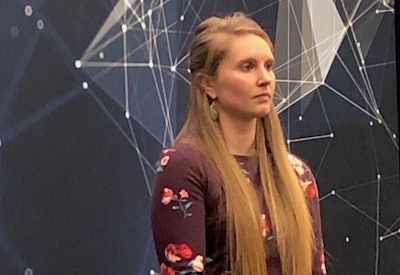When it comes to consistently delivering sustainable packaging innovation, plant-based household products company Seventh Generation is among the top Consumer Packaged Goods companies pushing the boundaries. As Kelly Murosky, Senior Packaging Engineer for the company, shared with attendees today at the American Packaging Summit, Seventh Generation began its journey in 2009, when it incorporated 25% post-consumer recycled plastic in its packaging, with an aspiration to move to 100%. In 2012/2013, it made a formal commitment to move to 100% PCR by 2020.
By 2015, the company had evolved its 25-oz dish liquid packaging to a 100% rPET bottle, adding a 100% PCR cap in 2017. Its 50-oz liquid laundry detergent bottle is also 100% PCR, with 97% made up of PCR high-density polyethylene and 3% white colorant (80% titanium dioxide and 20% PCR polyethylene carrier resin). The handled bottle also includes a 100% PCR polypropylene closure and spout, both of which use no colorant. Other bottles launched in 2015 with 100% PCR HDPE include those for its toilet bowl cleaner and its Energy Smart liquid laundry and dish detergents.
Its current 2020 goal is to eliminate the use of virgin petroleum plastic and virgin fiber in all of its packaging components, including flexible, multilayer film and hand wash pumps with metal springs. A former 2020 goal—to eliminate the use of non-recyclable or non-compostable packaging—has been revised to a new 2025 Zero Waste Goal. This means that 100% of its packaging materials will be reusable and reused, recyclable and recycled, or biodegradable and degraded.
Constantly evaluating its product and packaging portfolio for opportunities to reduce their environmental footprint, last year Seventh Generation performed a Life Cycle Analysis of its liquid laundry detergent to see where the greatest impacts resided. They found that consumer use of its products—a function outside their control—represented 92.2% of its total greenhouse gas emissions. The next greatest contributors were areas it could control: material production and distribution.
“We asked ourselves what we could do to combat these things,” said Murosky. “The solution was the Ultra Concentrated laundry detergent. When we compared it to our 2X and 4X concentrated detergents, it provided a 35-percent reduction in GHGs.” The Ultra Concentrated formula increases the now-industry-standard 2X formula by four times, effectively making it an 8X formula versus Seventh Generation's original product.
The packaging requirements for the new bottle included:
- 100% PCR content
- Recyclable
- Stock packaging—necessary due to the timeline, Murosky said
- Easy to use with one hand
- Regulated dosing
- E-commerce certified
Seventh Generation decided to offer the product only through e-commerce, as they felt the comparatively small detergent bottle would be a difficult sell at retail. “We knew if we put it on-shelf, consumers weren’t going to pick it up, even if we showed them they would still get 66 loads from the product,” Murosky explained. “On e-commerce, we have endless space for information, to show videos, and educate them on the bottle.”
Exact dosing was also particularly important for the Ultra Concentrated product. Murosky shared that there is a common consumer misperception that using more detergent than instructed will result in cleaner clothes. “One dose of the Ultra Concentrated detergent is approximately 11 milliliters,” she explained. “If you add even five milliliters more, you are going go through the bottle really fast."
The bottle design that ultimately met all of Seventh Generation’s requirements is a 23.1-oz, clear 100% rPET bottle with an ergonomic shape that allows for dispensing of an exact dose using EasyDose™ auto dose technology from Silgan. When the consumer opens the flip-top cap and squeezes the bottle, the cap dispenses only the amount of detergent required for one load.
On the back of the label, Seventh Generation lays out the environmental case for the product, with the copy “Small Dose™ Big Clean” and the following stats: “50% less water, 60% less plastic, and 75% lighter than our 100 fl oz bottle.” Step-by-step instructions are also provided on the label, through copy and illustrations.
In considering load/ounce of product, Murosky told the audience that Seventh Generation has become 8.6X more efficient in the last nine years. And, the company is continuing to look for areas where products could be concentrated. “It’s more of a consumer hurdle,” she said. “We hope to grow that segment, with things like spray cleaners or dilutables, but we have to figure out how to do it in a smart way so that consumers are willing to take the extra step [of adding the water].”



























